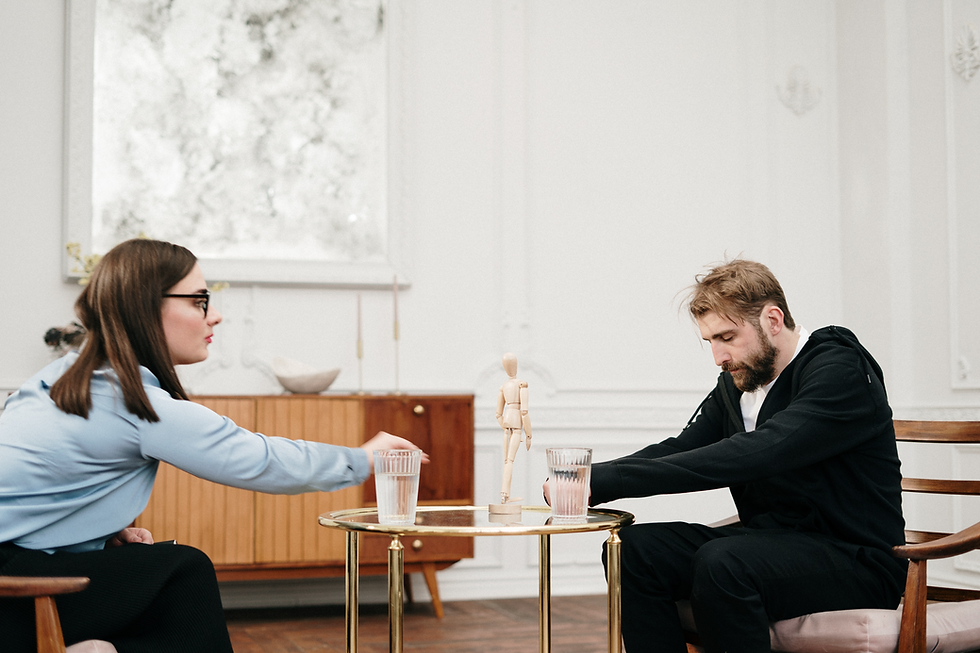Conform or be slaughtered?
- Shrishti Maharajsingh
- Oct 20, 2021
- 4 min read

Mental health refers to our psychological and emotional wellbeing and is something that all of us contend with at least once in our lives. According to various sources, mental health issues are rising significantly between 1/5 and 1/10 people suffering with mental health every single year. Due to the pandemic, mental health has become a central pillar of societal concern and conversation as we’ve battled with anxiety and uncertainty in the future, isolation and loneliness and a general decline in mental wellbeing.
Statistics show that people in the fashion industry are 25% more likely to experience mental illness, due to its fast paced, demand for the highest standards and heavily anticipated nature. Consumers are also exposed to a constant stream of marketing content telling them what they should be wearing, how they should be looking and offering false promises of fulfilment in doing so. Also, during the lockdown the issue of body size and image have become pretty prominent since a lot of people have spent most their time on social media either to post or just scroll through. Out of which apps such as Instagram has taken a toll on the wellbeing of a lot of individuals especially youngsters because everyone ( celebrities, influencers, fashion divas etc) posts such perfectly edited pictures of them enhancing their bodies that we perceive to be real.
Further, certain brands such as Boohoo contribute to this issue of body sizing and image. Now that the lockdown is over everyone has been rushing to stores to get themselves the right outfits to go outside. However, one problem all of us face over Instagram shopping, online shopping or in stores is the sizing because in every different brand our size alters which creates a mental block within us. “Am I fat? Maybe I need to loose weight etc” that could be quite disheartening. Was size always an issue and being pulse sized seen as a downfall? How does this impact someone’s wellbeing?
Size and image : An issue from the beginning
Size and body image of a women has always been a major deal in culture and society since years whether it was the 17th century or now. In the earlier years the obsession to look a certain way and have a certain ideal body type was of major importance to symbolize attractiveness or fertility. Which is why we women usually had curvy, voluptuous figures with small waists. However, societal views of a woman's body in the 21st Century has drastically changed, where people don’t have to conform to head masses or society.
Initially, it was manufactures who make pre-made sizes from size 0 - size 10 where the size was defined by the static value of the height and weight of the person. Going back to history of the 20th century, the power from the manufactures shifted to the retail industry who introduced the concept of mass production that gave people consistency in fashion/ clothing. The retail industry also introduced the current system where sizes keep changing to match up to bodies over time; known as vanity sizing.
A story by Washington post said, “A size 8 dress today is nearly the equivalent of a size 16 dress in 1958. And a size 8 dress in 1958 doesn't even have a modern-day equivalent—the waist and bust measurements of a Mad Men-era 8 come in smaller than today's size 00.” That reflects on how sizing has really changed over time.
Size today
From this we see that sizing is actually complicates it for us to shop but is a way of marketing clothes to us. This complication has led to constant question, “what size am I?” or “have I become fat?” because every other brand our size keeps altering. For example, somebody at Zara could be a size 4 and in another brand like Ohpolly a size 4 could be a little too small which proves that every brand has different measurements in sizes that aren’t necessarily the same but are close.
Another issue, revolves around brands that are using models to model for their pulse size clothing like Boohoo. The model states she was a size 12 but modelling for a size 16 garment. Why do brands pull such stunts? That could very misleading to consumers and might negatively provoke them into feeling miserable.
Health implication
Brands don’t realise the harm these discrepancies in sizes and misleading model pictures can do. Post the lockdown there are still many youngster who already suffer from depression, anxiety, stress, low self-esteem and suicidal tendency; this is just making it worse. Also, two common risks noticed by doctors is Bulimia and body dysmorphic disorder. That leads people to question their insecurity and eating disorder constantly. This issue with sizing has even led to many people crying in the dressing room and I’m sure most of us have done that at least once!! But personally, it looks like this issue will never go away; it’s going to be a constant.
So it’s up to us how we cannot let this issue get to our heads. Moreover, if you are mentally suffering you could always contact the NHS because MENTAL HEALTH COMES FIRST!!!



Comments